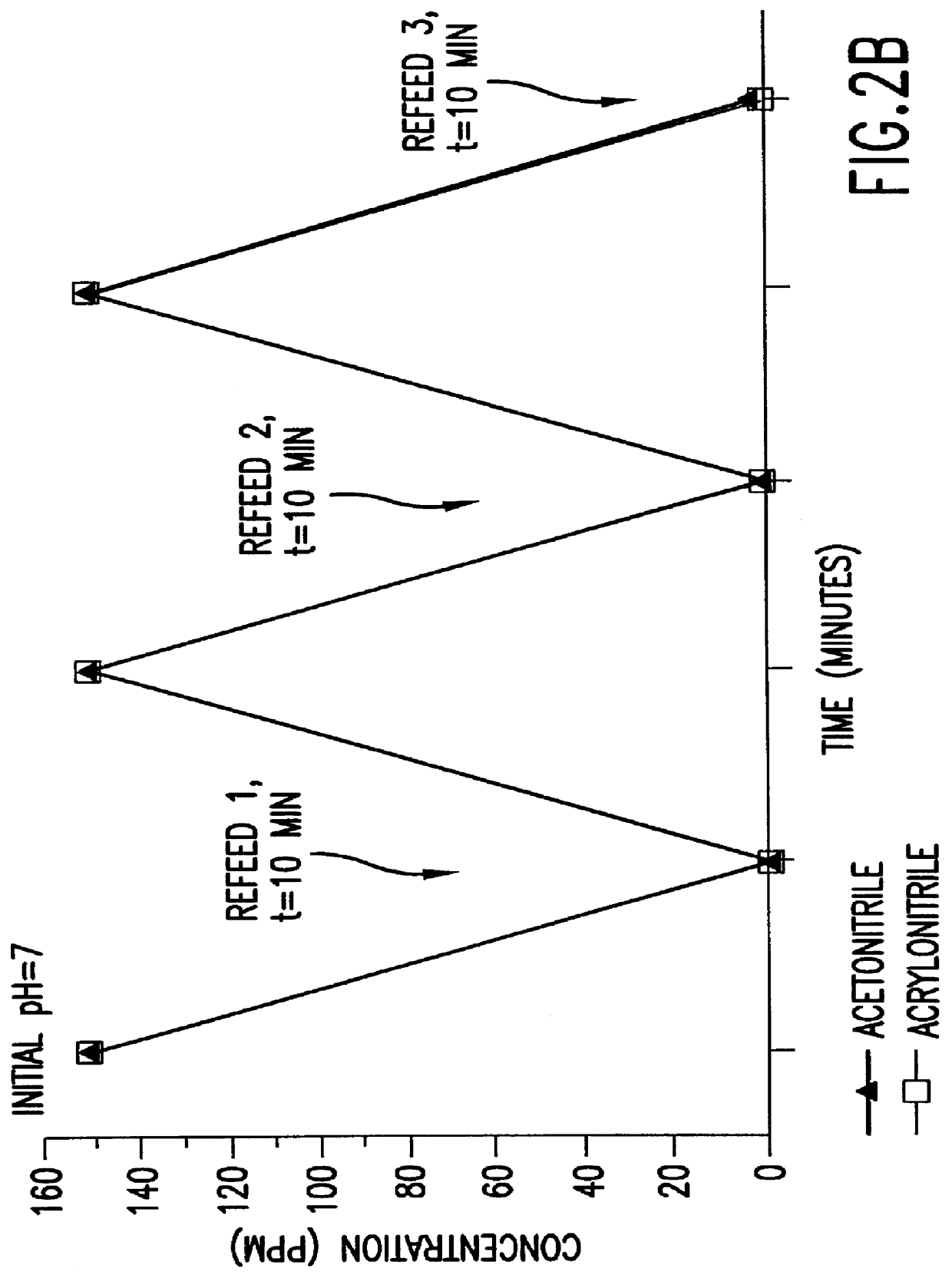Methods for the detoxification of nitrile and/or amide compounds
a technology of nitrile and amide, which is applied in the direction of enzymology, sustainable biological treatment, biological water/sewage treatment, etc., can solve the problems of high treatment cost, inability to utilize other nitrile compounds such as acrylonitrile and acrylamide, and inability to release hazardous waste effluent into the environment, so as to improve the purity and product yield of amide. the effect of degradation
- Summary
- Abstract
- Description
- Claims
- Application Information
AI Technical Summary
Benefits of technology
Problems solved by technology
Method used
Image
Examples
Embodiment Construction
The present invention encompasses methods for the detoxification of a mixture of nitrile compounds, a mixture of nitrile and amide compounds or a mixture of amide compounds at high total concentration(s) by conversion of the nitrile compounds to the corresponding amide and / or acid compounds or by conversion of the amide compounds to the corresponding acid compounds using a pure culture of a single microorganism strain induced to be capable of converting the nitrile moieties to amide and / or acid moieties and / or the amide moieties to acid moieties. If the original mixture is a mixture of nitrile compounds and an amide is formed, the amide can be further converted, using the present methods, to the corresponding acid. The induced pure cultures are able to detoxify mixtures of nitrile compounds or mixtures of nitrile and amide compounds which are typically present, in high concentration(s), in nitrile production waste streams. The induced pure cultures are able to remove an unwanted nit...
PUM
| Property | Measurement | Unit |
|---|---|---|
| temperature | aaaaa | aaaaa |
| pH | aaaaa | aaaaa |
| pH | aaaaa | aaaaa |
Abstract
Description
Claims
Application Information
 Login to View More
Login to View More - R&D
- Intellectual Property
- Life Sciences
- Materials
- Tech Scout
- Unparalleled Data Quality
- Higher Quality Content
- 60% Fewer Hallucinations
Browse by: Latest US Patents, China's latest patents, Technical Efficacy Thesaurus, Application Domain, Technology Topic, Popular Technical Reports.
© 2025 PatSnap. All rights reserved.Legal|Privacy policy|Modern Slavery Act Transparency Statement|Sitemap|About US| Contact US: help@patsnap.com



